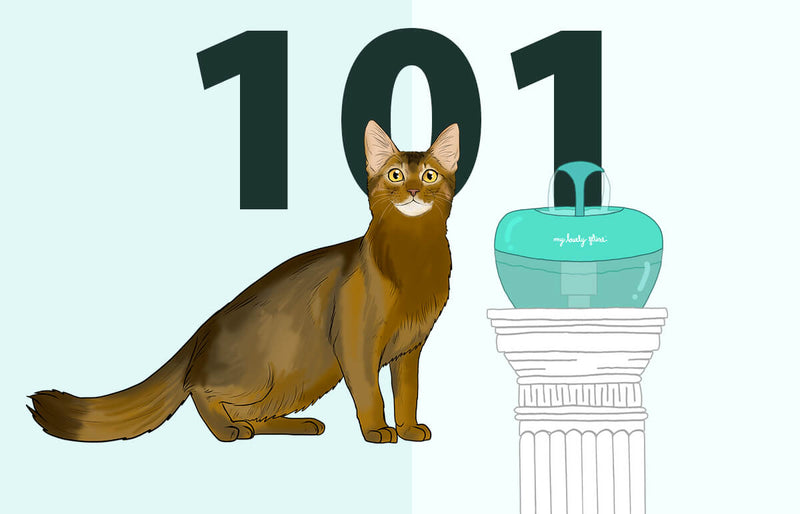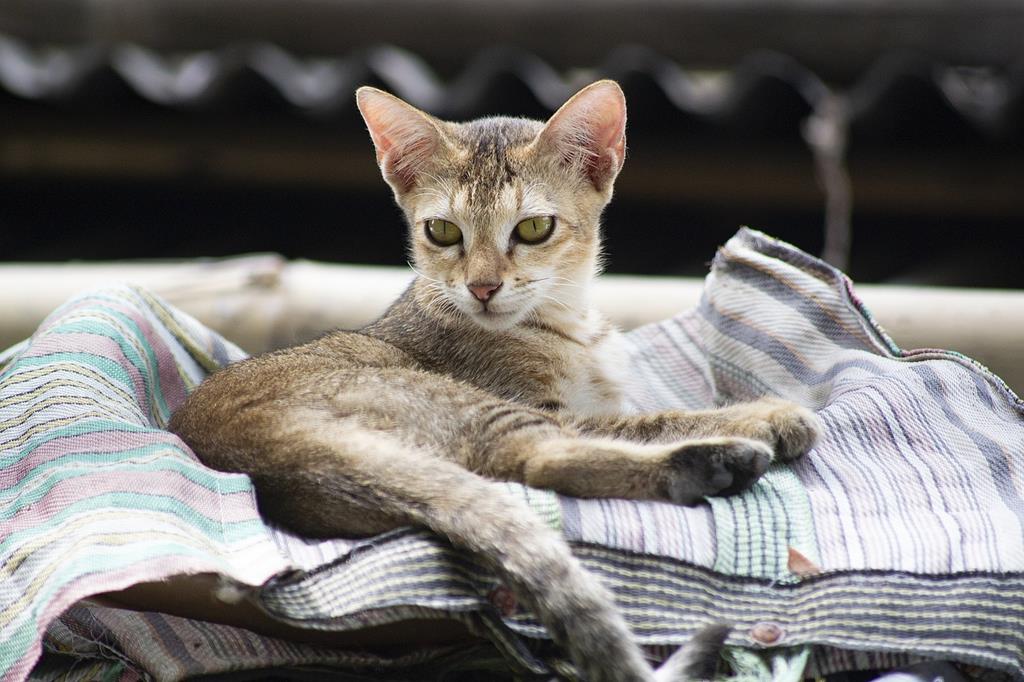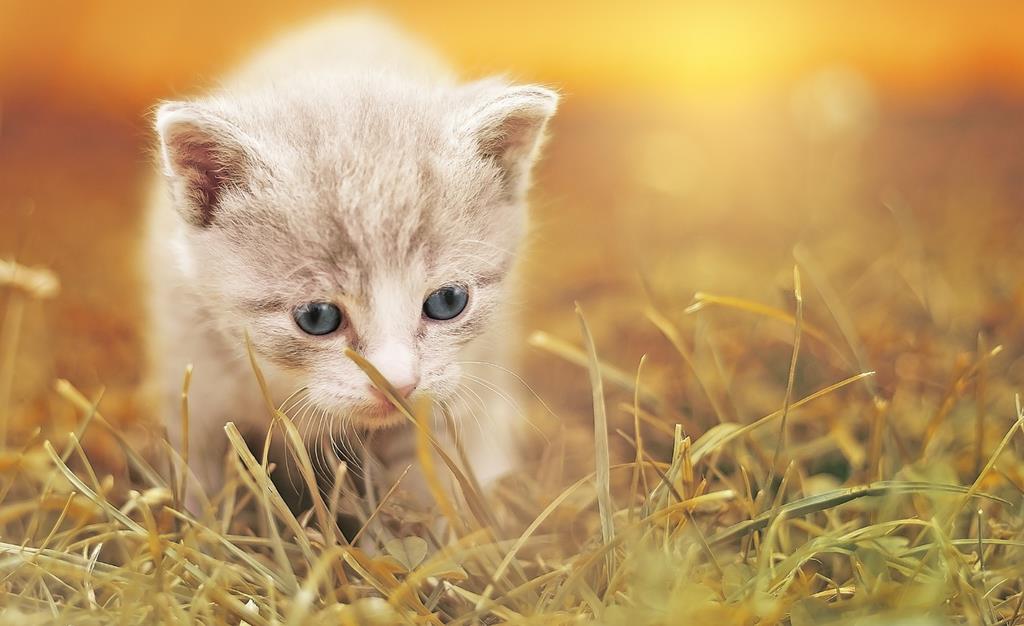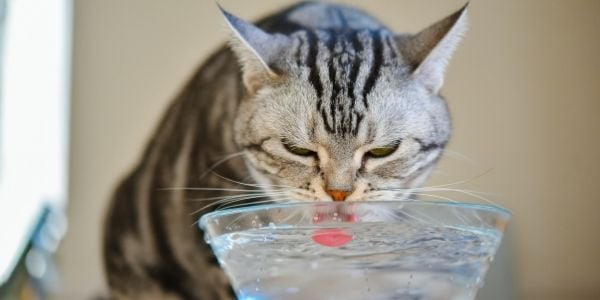Your cat’s water fountain gets slimy due to algae growth and bacterial buildup. Regular cleaning is necessary to prevent this slime layer.
Cats love fresh water, and a water fountain can encourage hydration with its constant flow. Yet, the perk of having moving water is accompanied by the need for diligent maintenance. Algae and microorganisms thrive in moist environments, particularly when sunlight and warmth are present.
Without proper cleaning, your cat’s fountain can quickly become a breeding ground for these unwelcome guests, leading to that unsightly and potentially harmful slimy layer. Ensuring that your feline friend’s hydration source remains clean not only promotes health but also enhances the longevity of the water fountain. It’s essential to adhere to a cleaning routine, use the recommended cleaning agents, and replace filters as directed to keep the sliminess at bay.

Credit: mylovelyfeline.com
The Mystery Of The Slimy Cat Water Fountain
The Mystery of the Slimy Cat Water Fountain
Caring for a cat often involves providing fresh water. But cat owners sometimes spot a slimy texture in their pet’s water fountain. This mysterious slime can puzzle and concern many. Let’s solve this slimy mystery together.
Signs Your Cat’s Water Fountain Needs Attention
Knowing when the water fountain requires cleaning is crucial. Look out for these signs:
- Visible slime on the surface and sides.
- Water that looks cloudy or dirty.
- Foul odors coming from the water.
- Your cat avoiding the fountain altogether.
What Exactly Is That Slimy Substance?
The slime is biofilm. Biofilm is a collection of microorganisms attached to the surface. It often consists of:
- Bacteria thriving in moist environments.
- Proteins from saliva and other organic materials.
- Different minerals found in water that support growth.
Regular cleaning of your cat’s water fountain can prevent this buildup. Always provide clean, fresh water to keep your pet happy and healthy.
Behind The Slime: Unveiling The Culprits
Your cat’s water fountain should be a haven of hydration, yet sometimes it becomes a slimy mess. Understanding the why can help you keep the water fresh and appealing. The slime often stems from organic growths, such as bacteria, algae, and yeast, which find the moist environment of the fountain an ideal breeding ground. Let’s delve into the specific culprits responsible for turning your cat’s refreshing stream into a slippery situation.
Bacterial Blooms And Their Role
Bacteria are everywhere, including in your cat’s water fountain. They can multiply quickly, forming a biofilm—commonly referred to as slime. The biofilm protects the bacteria and helps them stick to surfaces, which is why you might often find it clinging to the fountain. Regular cleaning and water change discourage these bacterial blooms from taking over.
| Tackling Bacterial Blooms |
|---|
| Clean the fountain weekly |
| Use a water filter |
| Replace water frequently |
Algae Growth In Your Cat’s Fountain
Algae, simple photosynthetic organisms, thrive in light and water. If your cat’s fountain sits in direct sunlight, algae can proliferate. This growth can lead to a green tint and slimy texture. Shielding the fountain from natural light helps minimize this issue.
- Place the fountain away from sunlight.
- Use an algae-resistant material for the fountain.
Yeast And Mold: Invisible Invaders
Yeast and mold might be invisible to the naked eye, but they contribute significantly to slime formation. They adore damp areas and can establish colonies unseen beneath the water’s surface or around the edges. Keeping the fountain dry and well-maintained is crucial for controlling these unwelcome guests.
- Dry the fountain area regularly.
- Maintain a clean water source.
- Inspect and scrub the nozzle and basin.
Regular maintenance keeps the fountain free of slime and safe for your furry friend.
Factors That Contribute To Fountain Slime
Have you ever noticed a slimy substance in your cat’s water fountain? This slime formation is common but preventable. Understanding the factors that contribute to this slime can help keep your cat’s water clean and fresh. Let’s dive into the main causes of fountain slime.
Environmental Factors And Slime Formation
Your home environment plays a role in slime buildup. Dust, pet hair, and food particles can make their way into the fountain, providing nutrients for bacteria. High temperatures and humidity also speed up slime formation. Keeping the fountain clean is just as important as where you place it.
Material Of The Fountain: A Contributing Factor
The material of your cat’s water fountain influences slime growth. Plastic fountains are more prone to scratches. These tiny grooves become perfect spots for bacteria to hide and multiply. Alternatively, stainless steel or ceramic fountains may resist slime better due to their smoother surfaces.
Water Quality And Its Impact On Slime
Water quality is crucial. Hard water can leave mineral deposits that encourage slime. Water additives like vitamins or dental cleansers may also contribute to the problem. Regularly changing the water and using filtered water can minimize the risk of slime in your cat’s fountain.
Preventing Slime In Your Cat’s Hydration Haven
Cat owners know the importance of keeping their furry friends hydrated. But a common problem is the slimy build-up in water fountains. Not only is this unsightly, but it can also deter cats from drinking. To ensure your pet’s water source stays fresh and inviting, let’s delve into strategies to prevent slime from taking over.
Regular Cleaning Regimens To Combat Slime
Maintaining a consistent cleaning schedule is vital. Here’s a simple routine:
- Weekly fountain disassembly
- Use mild soap and warm water
- Scrub away slime and residue
- Rinse thoroughly
- Monthly deep clean with vinegar or fountain-safe cleaner
Replace filters and check pumps for debris to keep the fountain running smoothly. A clean fountain means healthier, happier cats.
Fountain Location Optimization
Place the fountain in a cool, shaded area to slow down bacterial growth. Keep it away from food and litter areas to avoid contamination. Good airflow around the fountain also prevents slime.
Choosing The Right Water And Materials
Filtered or distilled water can reduce impurities, leading to less slime. Consider fountains made of stainless steel or ceramic over plastic, as they resist bacteria better. Always ensure the materials used are non-toxic and safe for your cat.
Is Slime Harmful To Cats?
If you own a cat, you’ve likely noticed a slimy buildup in their water fountain. This slimy substance can cause concern. Let’s explore if this slime is harmful to cats and what risks it may pose.
Potential Health Risks Of Contaminated Water
Cats need clean water just like humans. Slime in a water fountain is often biofilm, a collection of bacteria and other microorganisms. This buildup can lead to health issues such as:
- Upset stomach – Cats may experience digestive problems if they consume contaminated water.
- Dental disease – Bacteria can contribute to plaque and cause dental issues.
- Infections – Harmful bacteria in the slime might lead to infections.
Prevent bacteria growth by regularly cleaning the fountain and changing the water.
Recognizing Signs Of Illness From Contaminated Fountains
Understand the signs of illness caused by a slimy water fountain:
| Signs of Illness | What To Do |
|---|---|
| Change in drinking habits | Check the fountain for slime; clean it thoroughly. |
| Loss of appetite | Consult a vet if the cat shows disinterest in food. |
| Vomiting or diarrhea | Provide clean water; seek vet care if symptoms persist. |
Take action right away if you notice any of these signs.

Credit: meowa.com
Professional Insights And Solutions
Maintaining your feline friend’s water fountain should be a top priority for any cat owner. Understanding why slimy build-up occurs and knowing how to effectively combat it ensures that your pet stays hydrated with clean and fresh water. Let’s dive into the expert tips and the latest innovations that can help keep those water fountains pristine.
Expert Advice On Maintaining A Clean Fountain
Bacteria and algae growth often lead to slime in cat water fountains. A regular cleaning routine can make all the difference.
- Weekly Cleansing: Dismantle and scrub each part of the fountain using a non-toxic cleaner.
- Rinse Thoroughly: Ensure all cleaning agents are completely washed off to safeguard your cat’s health.
- Water Change: Refill with fresh water consistently to reduce the risk of slime formation.
- Filter Replacement: Change filters as recommended to keep the water circulating and clean.
Innovations In Cat Water Fountain Design
Today’s market boasts cutting-edge water fountains designed with your cat’s health and hygiene in mind.
| Feature | Benefit |
|---|---|
| UV-C Sterilization | Eliminates microbes and prevents slime build-up. |
| BPA-Free Materials | Safeguards against harmful chemicals. |
| Multi-Stage Filtration | Ensures water purity and taste. |
| Smart Sensors | Automates cleaning reminders and water refilling. |
Keep an eye out for models with these features to provide the best hydration experience for your feline companion. Regular upkeep paired with these innovations makes slimy water a problem of the past!

Credit: www.amazon.com
Frequently Asked Questions Of Why Does My Cat’s Water Fountain Get Slimy
What Causes Slime In Cat Fountains?
The slime in cat water fountains is typically biofilm. Biofilm forms when bacteria adhere to the fountain’s surfaces in a moist environment. Regular cleaning prevents biofilm buildup, ensuring the water stays fresh for your cat.
Can Dirty Fountains Make Cats Sick?
Yes, a dirty cat water fountain can harbor bacteria and mold that can lead to illness. It’s vital to regularly clean the fountain to prevent your cat from ingesting harmful microbes that can cause health issues.
How Often Should You Clean A Cat’s Fountain?
It’s best to clean a cat’s water fountain at least once a week. However, for fountains with multiple cats using them, or for those prone to faster biofilm production, more frequent cleaning might be necessary.
Does Filtered Water Reduce Slime Build-up?
Filtered water can reduce slime build-up by removing minerals and impurities that contribute to biofilm formation. However, it does not eliminate the need for regular cleaning, as bacteria can still grow in filtered water over time.
Conclusion
Understanding the causes of slime in your cat’s water fountain is crucial for their health and hydration. Regular cleaning and maintenance prevent bacterial growth, ensuring fresh, clean water. Your proactive efforts will keep your furry friend happy and healthy, encouraging them to drink water frequently.
Remember, a clean fountain is the foundation of your cat’s well-being!



